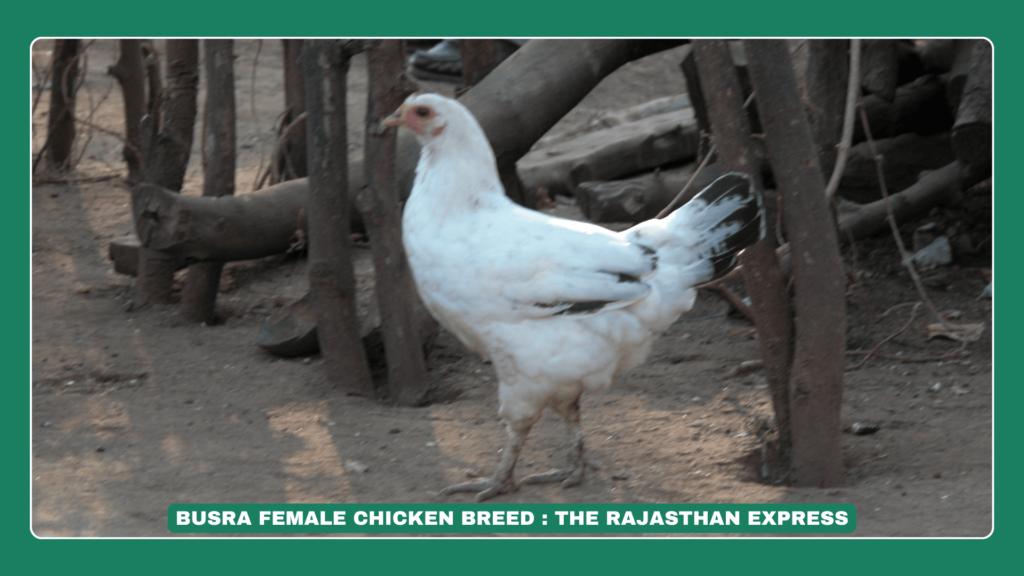Busra Chicken Breed : Indigenous Poultry Breed

Busra Chicken Information
| Conservation Status | Not at Risk |
|---|---|
| Scientific Classification |
|
| Breed Type | Dual-purpose Breed (Meat and Eggs) |
| Alternate Names | Desi |
| Origin | India (Gujarat and Maharashtra) |
| Breeding Tract |
|
| Comment on Breeding Tract | Busra breed of chicken is reared by tribal people living all along on either side of the boundary line of Maharashtra and Gujarat. It covers Peint and Surgana taluks of Nasik; Sakri taluk of Dhule; and Navapur, Taloda, and Dhadgaon taluks of Nandurbar districts of Maharashtra; and Uchchal, Songadh, and Nizer taluks of Surat; and Ahawat taluk of Dang district of Gujarat. |
| Main Use | Food – Meat and Eggs |
| Comment on Main Use | These birds are reared for home consumption as well as for sale of live birds and eggs. A hen fetches around Rs.60-70 and a cock around Rs.100-120. |
| Origin of Name | Busra nomenclature might have come from Busrawal – a village in Sakri taluk of Dhule district or from the name of a tree Busrawal (Marathi) / Bahawa (Advasi dialect). |
| Herd Book or Register Established | No |
| Breed Societies (if Any) | No |
| Morphology |
|
| Management |
|
| Performance |
|
| Population | No specific population data available. |
| The Rajasthan Express: Busra Chicken Breed Details | |

Discover the Busra chicken breed, a hardy and low-maintenance poultry variety. Learn about its origin, traits, and backyard farming practices.
THE RAJASTHAN EXPRESS
